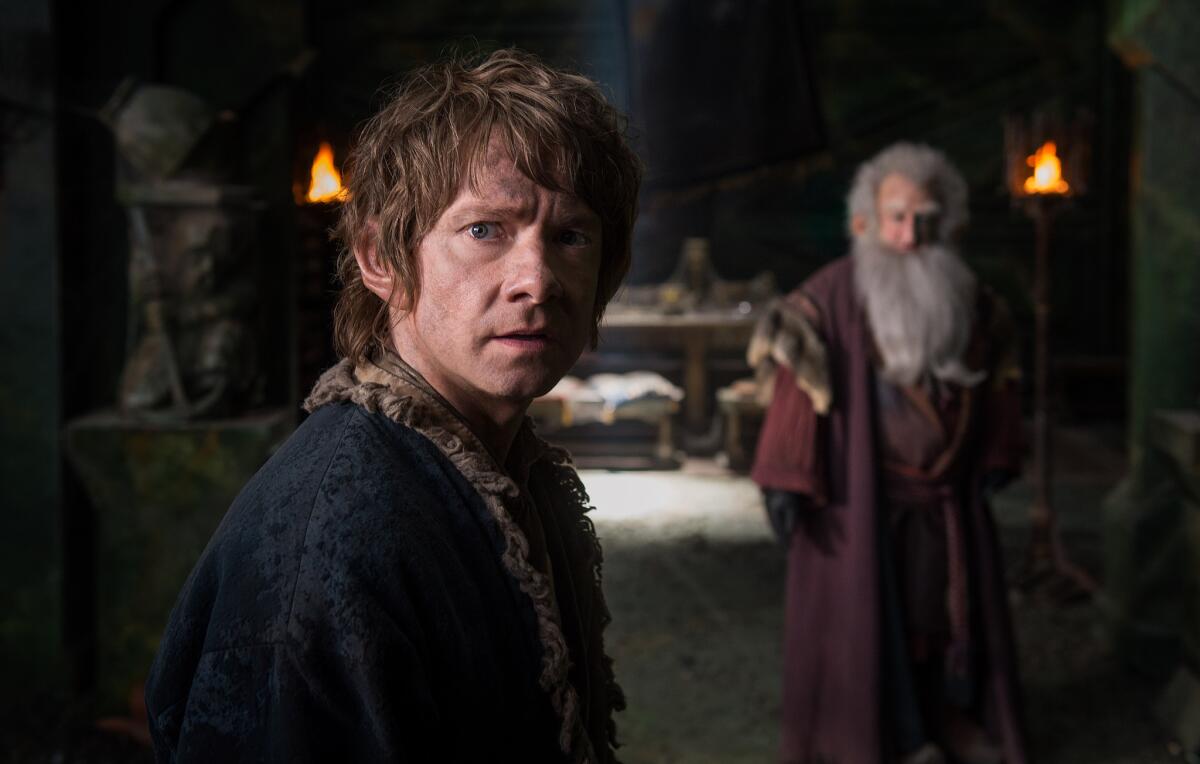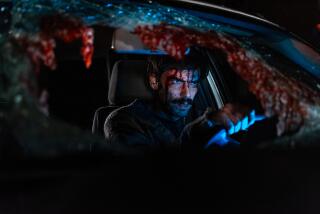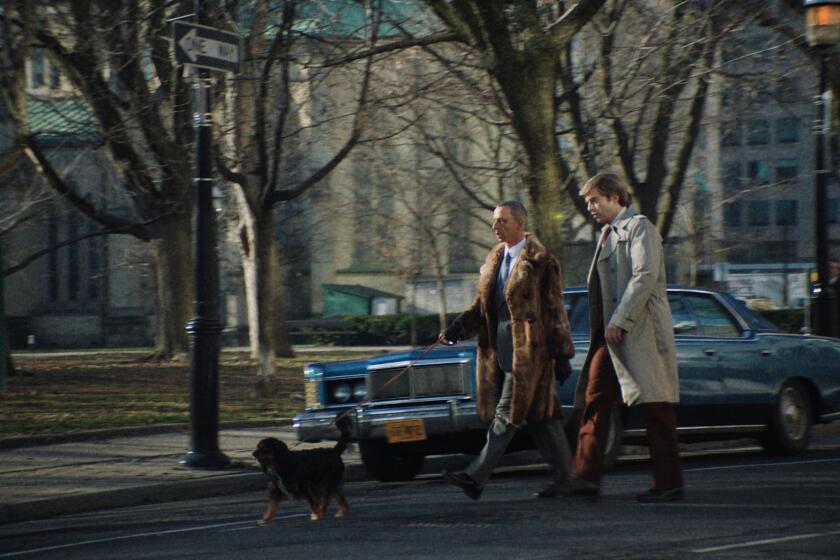Review: ‘Hobbit: The Battle of the Five Armies’ too often overwhelms

There are three big Middle-earth lessons in “The Hobbit: The Battle of the Five Armies,” Peter Jackson’s final film tribute to J.R.R. Tolkien’s literary fable.
Firstly: Dragons, even ones as mighty as that slithery scorcher Smaug (Benedict Cumberbatch), are ever so moan-y and melodramatic when wounded, whether it’s their ego or their scaly underside that’s been dinged.
Secondly: Five armies are too many. Within minutes of the first assault, “The Hobbit” battlefield begins to look like an out-of-control Comic-Con after-party. As orcs, wargs, bats, elves, dwarfs, eagles and Lake-town citizens go at each other, you have to wonder who is doing the math.
Finally: A dwarf king like Thorin Oakenshield (Richard Armitage) knows when to call it a day. A wizard as wise as Gandalf the Grey (Ian McKellen) understands when to make an exit. Hobbits, however, like Bilbo Baggins (Martin Freeman), and certain, ahem, directors, are very reluctant to say goodbye.
Which is why the title of the film could just as easily have been “The Hobbit: The Indecision of the Five Endings.”
Looking at Jackson’s Tolkien oeuvre, which we must at this juncture, “The Lord of the Rings” trilogy felt fresh from its opening frame and was soaring by its final fade to black. There are no doubt many reasons why, but I suspect in choosing to tackle it first, the filmmaker loved its fables more.
That choice turns “The Hobbit” into a prequel, unfolding as it does six decades before “The Lord of the Rings” would become completely obsessed with one particularly powerful ring. Prequels, as George Lucas found, are difficult to pull off. By nature, they are required to be connected to and yet disconnected from their future selves, which we have already gotten to know. Making matters more dicey, it seems that everyone who was anyone in the Tolkien mythology stops by to take their last curtain call — let’s hear it for one final show of support from the White Council and the ethereal power of the Queen of the Elves (Cate Blanchett).
A nice sentiment, to remind of all we’ve loved, but it makes the plotting more than merely unwieldy; it becomes unfocused and scattered, which Tolkien rarely was. Screenwriters Fran Walsh, Philippa Boyens, Jackson and Guillermo del Toro had a tough time reining things in. That’s assuming they tried.
“The Lord of the Rings,” which began its run in 2001, saved its best, “The Return of the King,” for last. The film swept the Oscars, taking home 11 wins, including the coveted best picture and director, which had eluded the New Zealander.
“The Hobbit” was an even slower starter. “An Unexpected Journey,” the first installment in 2012, is remembered more for its assault on the senses than its entertainment, in part due to the much-touted technology that moved things along at a speedy 48 (rather than 24) frames per second and delivered eye-searing clarity. (Jackson continues to offer a 48 fps version of “The Hobbit” films in select theaters, but it was not shown to critics.)
“The Desolation of Smaug,” the second in the series, brought us that magnificent dragon deep inside Lonely Mountain, as well as far better storytelling, balancing emotions with action. It represented “The Hobbit” trilogy’s high point, though of course we didn’t know it then.
The finale is not an all-out disappointment. It should satisfy the franchise’s fans, and it does wrap up any loose ends you might be wondering about — like whether the interspecies love between Tauriel (Evangeline Lilly) the elf and Kili (Aidan Turner), a dwarf, will endure, if Thranduil’s (Lee Pace) arrogance will ever cease, if Azog the Defiler (Manu Bennett) will learn to smile.
Jackson also carves out some more room for Armitage to show what the dwarf king is made of. With the actor’s flare for making dark, brooding introspection magnetic, Thorin’s battle with himself and his legacy is by far the film’s most interesting fight.
But other intriguing character arcs are mostly overwhelmed in the cacophony of the constant clashes. Ironically, it makes the epic good-versus-evil “Battle” less gripping than the dragon’s tale. It is likely the series will, unlike the dwarfs, end its run with no gold. “The Lord of the Rings” final tally for its trilogy was 17 Oscars.
If you think the comparison to “The Rings” unfair, let’s look at “The Battle” on its own.
The action begins with Smaug working out his anger issues on Lake-town now that the dwarfs have retaken Lonely Mountain and ousted the brute. The burning of the city, however, proves the perfect time for Bard the Bowman (Luke Evans) to begin proving his worth and for that spineless schemer Alfrid (Ryan Gage) to start providing the comic relief. Thorin is losing his mind, a bad case of “dragon madness” from being around all that gold. Bilbo is bothered by it and snatches the powerful Arkenstone for safe-keeping.
Meanwhile evil is gathering, with Cumberbatch doing double duty, also playing Sauron, the Ancient Enemy, a.k.a. the Dark Lord. (You have to love how Tolkien used capitalization so ominously and effectively, one of those conceits impossible to replicate in the films, though the score by Howard Shore tries its kettle drum and crescendo-ing best.)
Despite all the in-fighting and power plays, a great deal of “The Hobbit’s” charm always rests, as it should, with the hobbit Bilbo. From the first, Freeman has made him adorably whimsical, enduringly self-deprecating and increasingly self-confident. The actor has done well by Bilbo, doing much to make the unexpected journey worth the watching.
More to Read
Only good movies
Get the Indie Focus newsletter, Mark Olsen's weekly guide to the world of cinema.
You may occasionally receive promotional content from the Los Angeles Times.











